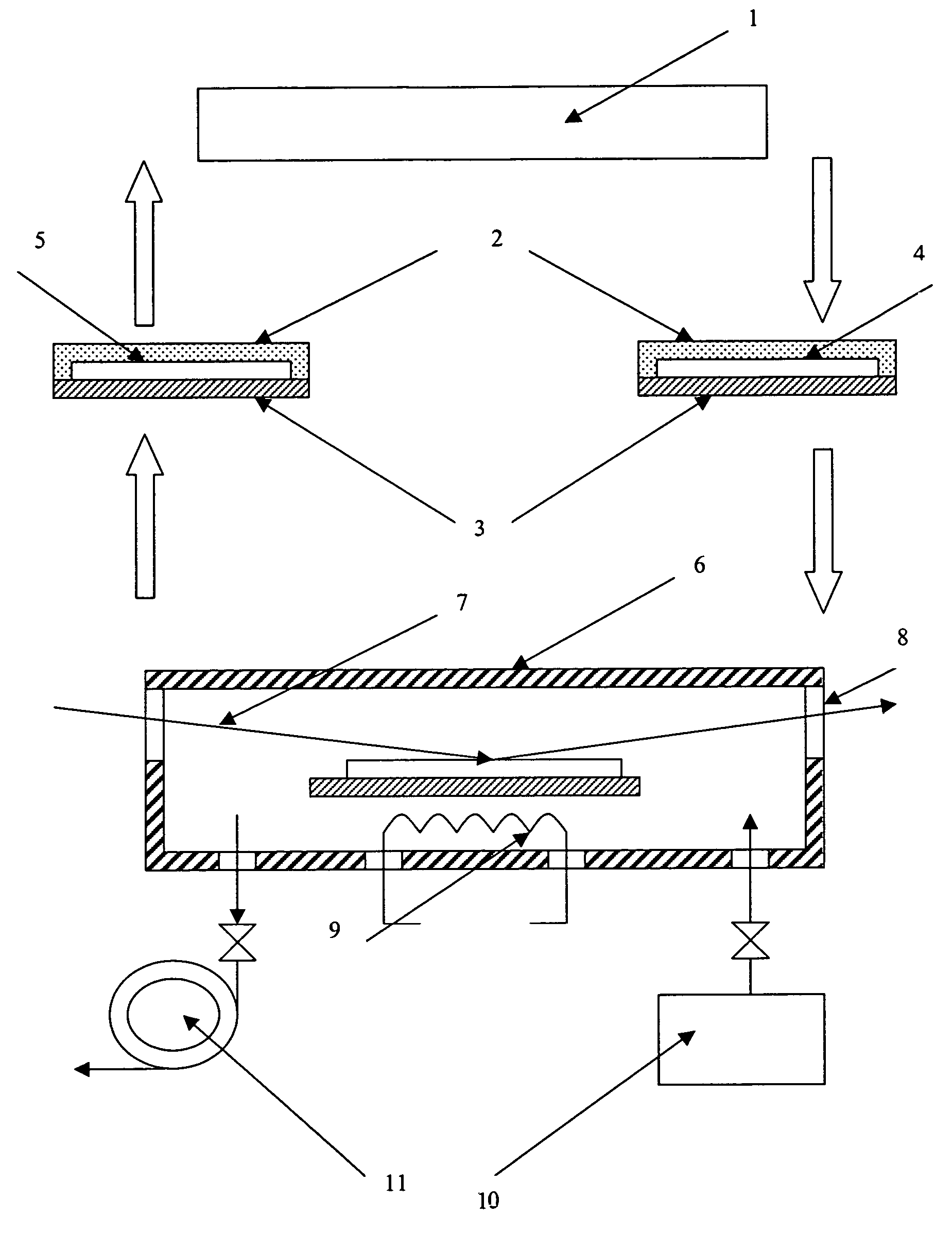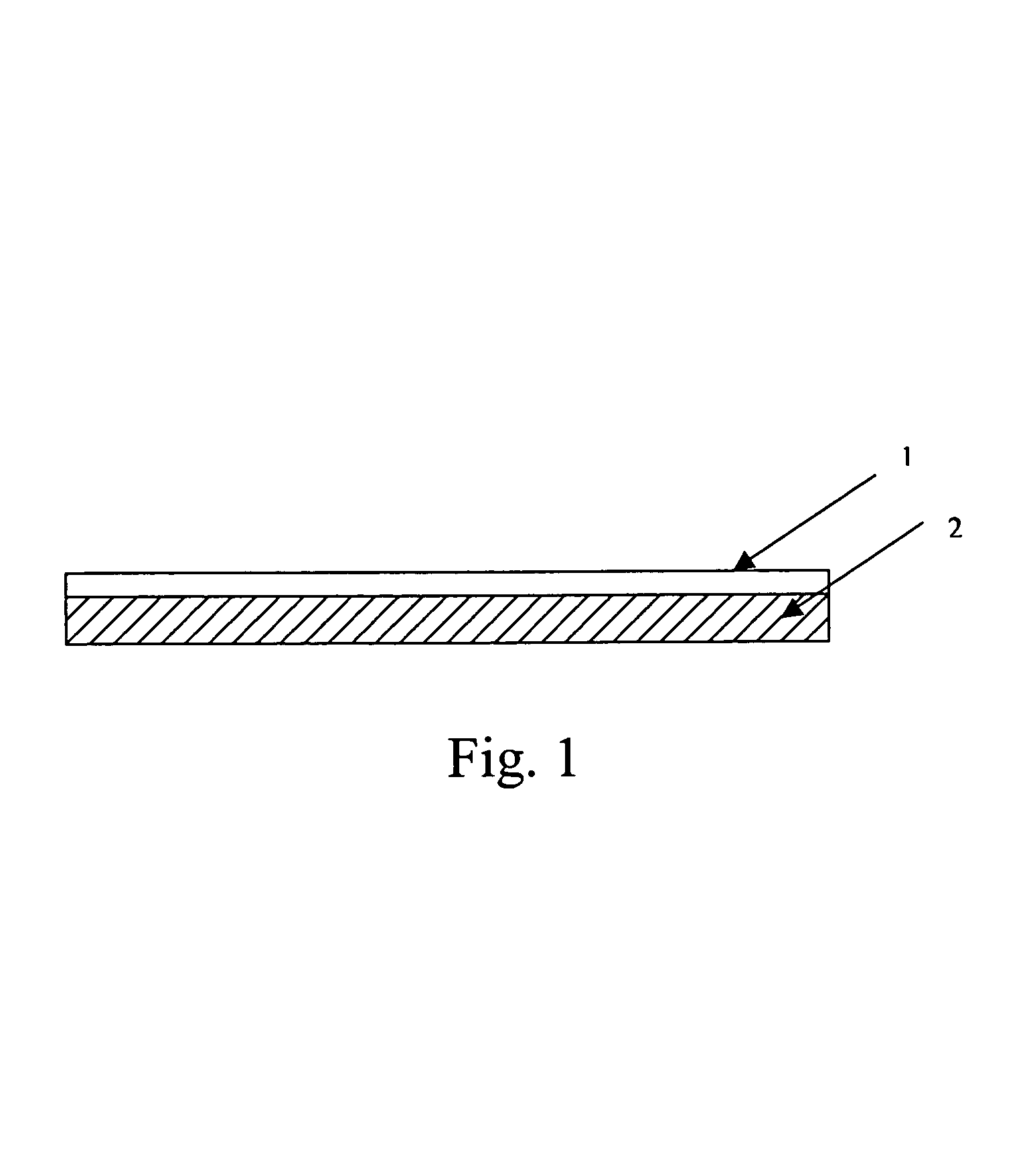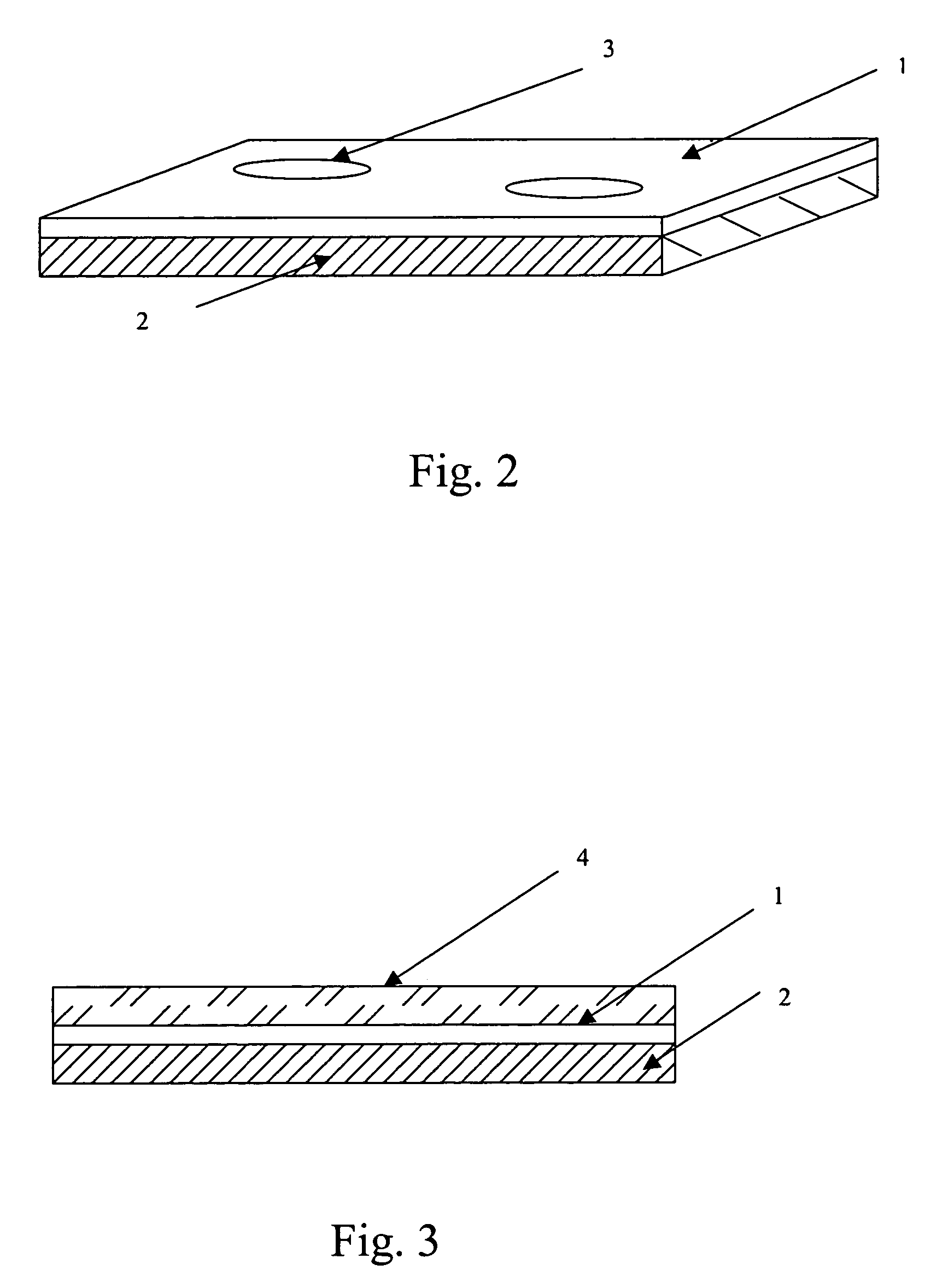Anisotropic film manufacturing
a technology of anisotropy and film, applied in the field of anisotropy films, can solve the problems of limiting the possibilities of using such crystals as substrates for epitaxial growth, limiting the number of single crystal materials suited for epitaxial growth, etc., to achieve the effect of simplifying the method of manufacturing, and reducing the number of substrates
- Summary
- Abstract
- Description
- Claims
- Application Information
AI Technical Summary
Benefits of technology
Problems solved by technology
Method used
Image
Examples
Embodiment Construction
[0038]As generally described the present invention, a further understanding can be obtained by reference to the specific preferred embodiments, which are provided herein for purposes of illustration only and are not intended to limit the scope of the appended claims.
[0039]In one preferred embodiment, the disclosed invention provides a method for obtaining an anisotropic film. The first step of the method is providing a substrate. The second step is a deposition by means of Cascade Crystallization Process of at least one conjugated aromatic crystalline layer onto said substrate. The conjugated aromatic crystalline layer is characterized by the globally ordered crystalline structure with intermolecular spacing of 3.4±0.3 Å in the direction of one of the optical axes. The conjugated aromatic crystalline layer is formed by rodlike supramolecules, which comprise at least one polycyclic organic compound with conjugated π-system and ionogenic groups. The polycyclic organic compound can be ...
PUM
 Login to View More
Login to View More Abstract
Description
Claims
Application Information
 Login to View More
Login to View More - R&D
- Intellectual Property
- Life Sciences
- Materials
- Tech Scout
- Unparalleled Data Quality
- Higher Quality Content
- 60% Fewer Hallucinations
Browse by: Latest US Patents, China's latest patents, Technical Efficacy Thesaurus, Application Domain, Technology Topic, Popular Technical Reports.
© 2025 PatSnap. All rights reserved.Legal|Privacy policy|Modern Slavery Act Transparency Statement|Sitemap|About US| Contact US: help@patsnap.com



